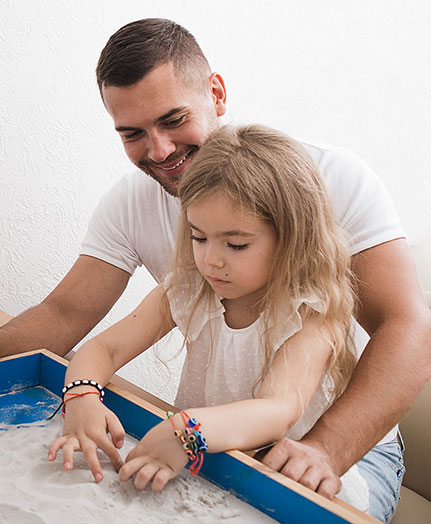Teaching Essential Life Skills for Children with Autism & Speech‑Language Delay
(A Guideline from National Therapy Center)
At National Therapy Center, we see life skills not just as routines or chores—but as the building blocks of confidence, independence, and community engagement.
Why Life Skills Matter
Children with autism and speech-language delays often have challenges in performing daily living tasks independently. Life skills—such as grooming, meal prep, planning, and safety—form the foundation for greater autonomy and improved quality of life (Autism Speaks, 2024).
Teaching these skills early allows for more natural development and reduces the stress of transitioning into school, adolescence, or adulthood. Structured routines and visual supports play a key role in success (Autism Speaks, 2024).
The Domains of Independence: OHSU’s Adolescent Autonomy Checklist
The Adolescent Autonomy Checklist, developed by the Youth in Transition Project and updated by Oregon Health & Science University (OHSU), organizes essential life skills into six developmental categories:
Home & Kitchen Tasks
Personal Grooming & Hygiene
Healthcare Management
Community Navigation & Safety
Leisure & Social Involvement
Future & Vocational Readiness
Each domain helps caregivers and providers monitor progress across levels of independence, from “needs practice” to “accomplished” (Oregon Health & Science University, 2018).


Blending Life Skills and Communication Support
Many children with speech-language delays benefit from learning life skills alongside communication strategies. For example, while teaching a child how to prepare a snack, therapists can also work on requesting help, labeling items, or following multi-step instructions using speech or augmentative tools (Autism Speaks, 2024).
Tools such as picture exchange communication systems (PECS), visual schedules, and speech-generating devices (SGDs) support the child’s ability to both understand and express functional language during daily routines.
Sample Life Skill Progression by Age
| Age | Routine Task | Life Skill Example | Language Goal |
|---|---|---|---|
| 3–6 | Morning routine | Brushing teeth with help | Labeling objects (e.g., “toothbrush”) |
| 7–10 | Chores | Making a sandwich, setting the table | Requesting help or naming steps |
| 11–13 | Self-care | Independent grooming, managing clothing | Following 2-step directions |
| 14–18 | Independence | Managing medications, budgeting | Scheduling appointments, self-advocating |
This staged development is aligned with the checklist used at OHSU and adjusted based on speech-language needs (Oregon Health & Science University, 2018).
Tips for Families & Educators
Start early: Don’t wait for adolescence. Introduce basic life skills in early childhood (Autism Speaks, 2024).
Use visual supports: Photos, icons, and schedules promote understanding and reduce anxiety.
Pair speech with action: Embed communication goals into daily routines for natural learning.
Break it down: Use backward chaining and task analysis to teach skills in manageable steps.
Celebrate progress: Every new independent step matters—whether it’s brushing hair or paying for an item at a store.
Why This Approach Works
Life skills training is most effective when it’s paired with real-world practice, caregiver involvement, and communication supports. Children benefit more when they understand not just how to do something, but also why it matters and how to ask for help (Autism Speaks, 2024; Oregon Health & Science University, 2018).
At National Therapy Center, our multidisciplinary model integrates Applied Behavior Analysis (ABA), speech-language pathology, and occupational therapy. We focus on skills that matter in everyday life—so that children with autism and speech-language delays can thrive.
References
Autism Speaks. (2024, September). Life skills for autism. https://www.autismspeaks.org/life-skills-for-autism
Oregon Health & Science University. (2018, July). Adolescent autonomy checklist (Updated). https://www.ohsu.edu/sites/default/files/2018-12/Adolescent%20Autonomy%20Checklist%20updated.pdf